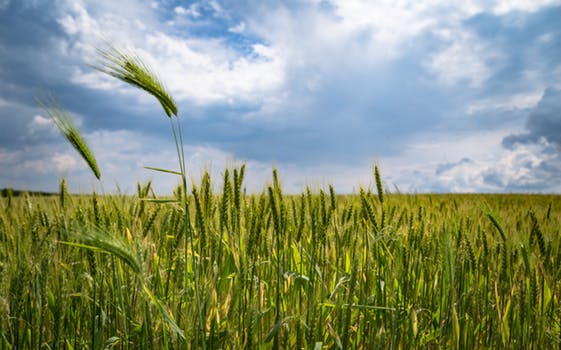Research and Innovation in European Agriculture: the Challenges, Solutions and Lessons learned
Approximately 70% of the EU land area is in agricultural use or covered by forestry. The vital role of agriculture and rural development deeply affects the economic, social and environmental aspects of every EU member state, as well as other non-EU countries. The need to ensure productivity sustainability has attracted more concerns than ever. Fortunately, farmers, food companies and policy makers have begun to recognise the importance to introduce research and innovation into the agriculture sector. Today cross-sectoral partnerships have been adopted and promoted by the European Commission, such as the European Innovation Partnership ‘Agricultural Productivity and Sustainability’ (EIP-AGRI), with the purpose of bringing closer research and practice in the agri-sector, as well as addressing the challenges of maintaining food security, quality of life, and preserving natural capital in a more innovative way.
To Face the Challenges
So what are the challenges that farmers and all the other players in the industry are facing? The numerous pressures due to continued growing population? Huge amounts of food waste? The upward trend of malnutrition? Natural resources preservation? Or increased concerns about animal welfare? As a matter of a fact, “the highly complex economic, social and environmental situation” does not begin to cover the complexity and pressure that farmers, food companies, policy makers, technology providers and research institutes encounter. How do farmers manage their own farms into the future? To address today’s problems, and at the same time predict future needs, today’s research and innovation may be the only way which could provide tomorrow’s solutions in agriculture and forestry. The agricultural ‘revolution’ is therefore of great urgency to put into action in order to address the increasing challenges in this sector.
Challenges in Productivity
Although the European population is expected to remain rather stable in the period 2017 to 2030, the continued world population growth will drive demands for agricultural commodities and put pressure on food production. To increase food supply that also ensures food security is therefore necessary. In a global context, approximately 800 million people in the world still lack access to food (the Food and Agriculture Organization of the United Nations, 2015). Malnutrition, on the other hand, is an upward tendency that is happening in both developed and developing countries. To produce more nutritious food, along with balanced diets, is the key to tackle health problems. Finally, around 30% of global food production is going to waste every year. Thus, reducing food waste while increasing agricultural productivity should be considered equally crucial in the production, delivery and storage chain.
In terms of agricultural workforce, rural areas are already having difficulties creating attractive jobs in general, the fact that the rural workforce will shrink by 3.2% on average per year (EU agricultural outlook 2017-2030 report, 2017) will undoubtedly put more pressure on the productivity of the primary products. Therefore, the labour and workforce challenges are expected to be addressed by investing more into technology, research and innovation.
” The rural workforce will shrink by 3.2% on average per year (EU agricultural outlook 2017-2030 report, 2017)”
Challenges in Sustainability
The activities of farming are at the expense of natural resources, and sometimes inappropriate agricultural practices can have negative impacts on the management of natural capital, leading to soil degradation, water contamination, reduction and loss in the number and diversity of plants and animals (SOER 2015 – The European environment: state and outlook, European Environment Agency, 2015).
Climate change is another factor that contributes to sustainability issue in agriculture. According to IPCC’s (Intergovernmental Panel on Climate Change) reports, agricultural activities account for 10% of greenhouse gas emissions in EU and 24% globally (2014). The increasing occurrence of extreme weather caused by global climate change, inversely, largely affects the wellbeing of plants and animals, leading to the vulnerability of the soil, lands, and the farming systems.
To Address the Challenges
In 2016, the European Commission published ‘a strategic approach to EU agricultural and innovation’. It set five priority areas for research and innovation under two headlines:
Creating value from land – sustainable primary production
Priority 1: Resource management (notably soil, water and biodiversity).
Priority 2: Healthier plants and animals.
Priority 3: Integrated ecological approaches from farm to landscape level.
Enhancing rural innovation – modernising rural areas and policies.
Priority 4: New openings for rural growth.
Priority 5: Enhancing the human and social capital in rural areas.
This strategy took a year to develop and aims to support the remaining three years of EU funding framework Horizon 2020, and also to guide research and innovation in agriculture and forestry after the year 2020.
Meanwhile, the interactive innovation model, developed by the European Innovation Partnership “Agricultural Productivity and Sustainability” (EIP-AGRI), aims to bring together farmers, businesses, researchers, and other innovative actors (the so-called ‘multi-actor approach’) to increase project impacts in agriculture by creating a network of knowledge and experience sharing. The innovative partnership also takes advantage of EU’s research and innovation funding streams, such as Horizon 2020.
Among the complex and numerous policies and strategies in agriculture and forestry in the EU level, a particular strand of agricultural research and innovation has drawn attention to different actors in the implementation of these policies and strategies – Agri-digitisation.
There are two main things in a more digitised agriculture that will help feed the world’s growing population and deal with the increasing concerns of food security and environmental sustainability:
- Data
- Analytics
The tendency of utilizing big data flows in every industry, including the agri-sector, has been demonstrated in the EU’s ‘Digital Single Market’ strategy. Under this strategy, the ‘Internet of Things (IoT)’ encourages the digitisation in agriculture and allows users to exploit large amount of data collected, to grow more food with fewer resources on less land. Under the communication of ‘Digitising European Industry’ and ‘Building a European Data Economy’, policy makers are confident that the agriculture sector can fully benefit from digital innovation by upgrading its business models, processes, products and services.
Analytics of the data boost in a more digitised agriculture can help farmers monitor and predict crop patterns and animal health condition, to optimise crop yield and animal performance. It may also positively affect the agri-food chains, such as retail and distribution with the improved transparency in data sharing and analysing. Researchers, governments and even customers will see benefits from the open agricultural data sharing.
Funding Stream for Agricultural Research and Innovation
As the biggest EU research and innovation funding programme, Horizon 2020 has the financial backing of nearly €80 billion from the EU Budget.
Among the three research areas (also called pillars) in H2020 – Excellent science, industrial leadership and societal challenge, €4 billion funding has been allocated to the sub-programme related to agricultural research and innovation – Societal Challenge 2 ‘Food security, sustainable agriculture and forestry, marine and maritime and inland water research, and the bioeconomy’.
The EU has identified these areas as “integral parts of the European economy and society”. The significant challenges they are facing at the moment, requires solutions based on more investment in research and innovation.
H2020 is implemented through multi-annual work programmes, covering the overall objectives, calls for proposals and the topics within each call under each thematic section. In the Work Programme 2018 – 2020, also the last work programme for H2020, sets out the main objectives and directions for dealing with challenges in the agricultural sector. The relevant calls in 2018 are summarised here:
Objective: encourage the use of technology in agriculture
Calls:
- RUR-13-2018 – Enabling the farm advisor community to prepare farmers for the digital age.
- DT-RUR-12-2018 – ICT Innovation for agriculture: Digital Innovation Hubs for agriculture.
Objective: improve current or establish new business models.
Calls:
- RUR-14-2018 – Digital solutions and e-tools to modernise the CAP.
- DT-ICT-08-2019 – Agricultural digital integration platforms.
- DT-ICT-09-2020: Digital service platforms for rural economies.
Objective: To help deal with societal and economic effects.
Calls:
- RUR-02-2018 – Socio-economic impacts of digitisation of agriculture and rural areas.
If you want to know more about applying for any of these or how you can get involved, Contact us today.
Successful Projects and Lessons learnt
The introduction and implementation of research and innovation in the agricultural and the forestry sector, in the end, is a step to help build a new bioeconomy. It is a circular economy that connects every step of the production and process of our society, for the purpose of building a more efficient, low-emissions economy.
To achieve this, the EU has set a Bioeconomy strategy and an action plan to ensure a coherent approach that brings innovation, partnership and cooperation among different actors in the industry closer together.
As an EU member state and a participant that has an outstanding performance in H2020, Ireland demonstrates great potential in establishing a new bioeconomy that will create new opportunities, new products and new markets.
One example of a successful EU funding application was achieved by a European consortium coordinated by Glanbia together with European partners and a number of Irish actors, namely, Teagasc, UCD, TCD, Commercial Mushroom Producers Coop and Tipperary County Council. Whey Permeate (WP) and De-lactosed Whey Permeate (DLP) are major side-streams of dairy processing and represent a key challenge for the dairy industry due to a lack of reliability in current disposal routes and represent a sustainability bottleneck for the expansion of milk production in Europe in the “post-milk-quota era”. AgriChemWhey will build a first-of-a-kind, industrial-scale biorefinery with integrated symbiotic industrial and agricultural value chains that will valorise over 25,000 tonnes (100% dry matter) per annum of excess WP and DLP to several added value products for growing global markets including lactic acid, polylactic acid, minerals for human nutrition and bio-based fertilisers.
Teagasc, Ireland’s state agency which is responsible for the research, advisory and training services in the agriculture sector, has published the Teagasc Technology Foresight Project 2035, aiming to enable Ireland’s technology transform the agri-food and the bioeconomy sectors. The project concentrates on the identification of the key technologies which have potential to boost the competitiveness, growth and sustainability in these areas over the next 20 years.
Conclusion
To conclude, the development of a more sustainable and productive agriculture is an inevitable trend in the EU as well as in the world. With the main challenges identified, increasing the investment and joint effort in research and innovation in the agriculture sector has been emphasised through the implementation of various policies, strategies and initiatives, both at European and national level. Horizon 2020 is a fantastic opportunity for food companies, farmers and researchers to achieve this goal by providing substantial financial backing. Each actor in the agricultural and bioeconomy sector can benefit from Horizon 2020 and other EU funding streams by understanding and answering the relevant calls for proposals, providing the technologies and innovations that are beneficial to society.


